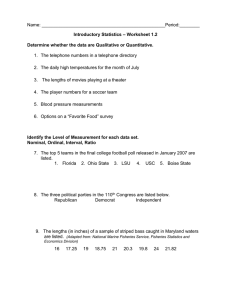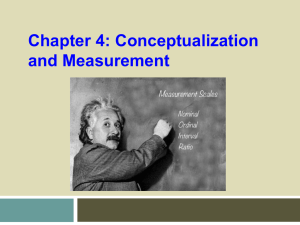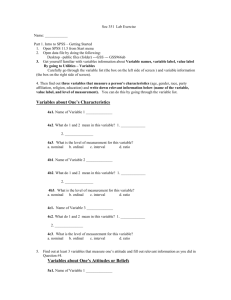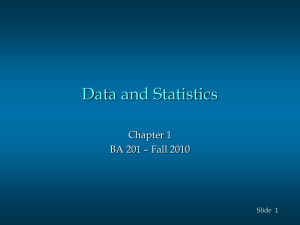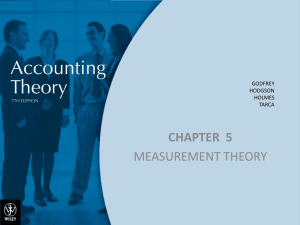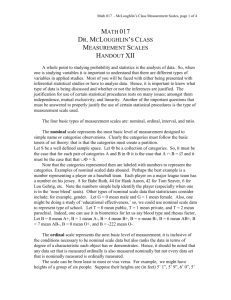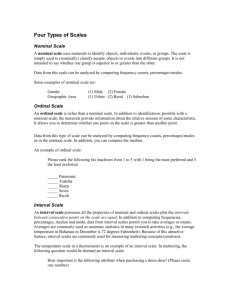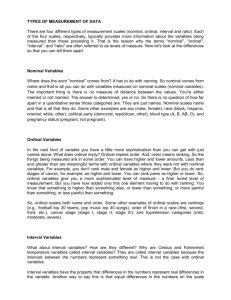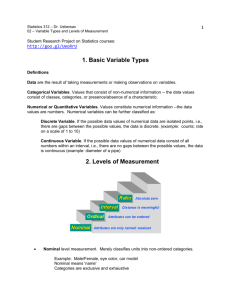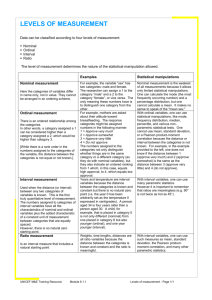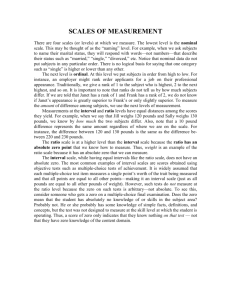Level of Measurement
advertisement
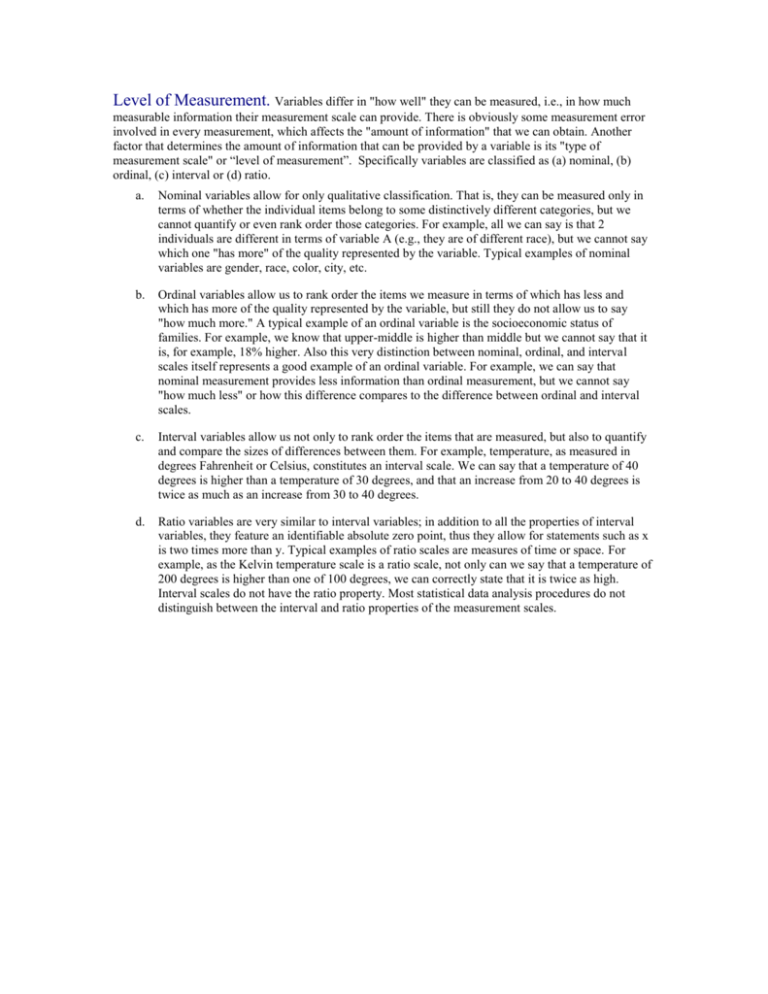
Level of Measurement. Variables differ in "how well" they can be measured, i.e., in how much measurable information their measurement scale can provide. There is obviously some measurement error involved in every measurement, which affects the "amount of information" that we can obtain. Another factor that determines the amount of information that can be provided by a variable is its "type of measurement scale" or “level of measurement”. Specifically variables are classified as (a) nominal, (b) ordinal, (c) interval or (d) ratio. a. Nominal variables allow for only qualitative classification. That is, they can be measured only in terms of whether the individual items belong to some distinctively different categories, but we cannot quantify or even rank order those categories. For example, all we can say is that 2 individuals are different in terms of variable A (e.g., they are of different race), but we cannot say which one "has more" of the quality represented by the variable. Typical examples of nominal variables are gender, race, color, city, etc. b. Ordinal variables allow us to rank order the items we measure in terms of which has less and which has more of the quality represented by the variable, but still they do not allow us to say "how much more." A typical example of an ordinal variable is the socioeconomic status of families. For example, we know that upper-middle is higher than middle but we cannot say that it is, for example, 18% higher. Also this very distinction between nominal, ordinal, and interval scales itself represents a good example of an ordinal variable. For example, we can say that nominal measurement provides less information than ordinal measurement, but we cannot say "how much less" or how this difference compares to the difference between ordinal and interval scales. c. Interval variables allow us not only to rank order the items that are measured, but also to quantify and compare the sizes of differences between them. For example, temperature, as measured in degrees Fahrenheit or Celsius, constitutes an interval scale. We can say that a temperature of 40 degrees is higher than a temperature of 30 degrees, and that an increase from 20 to 40 degrees is twice as much as an increase from 30 to 40 degrees. d. Ratio variables are very similar to interval variables; in addition to all the properties of interval variables, they feature an identifiable absolute zero point, thus they allow for statements such as x is two times more than y. Typical examples of ratio scales are measures of time or space. For example, as the Kelvin temperature scale is a ratio scale, not only can we say that a temperature of 200 degrees is higher than one of 100 degrees, we can correctly state that it is twice as high. Interval scales do not have the ratio property. Most statistical data analysis procedures do not distinguish between the interval and ratio properties of the measurement scales.

